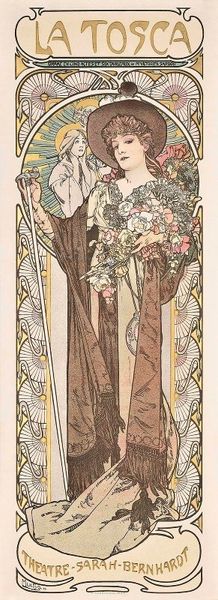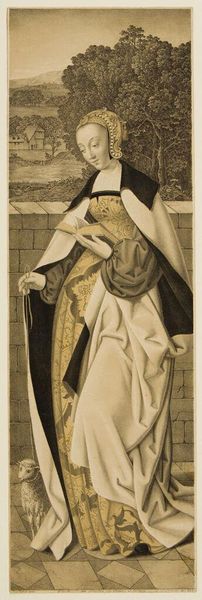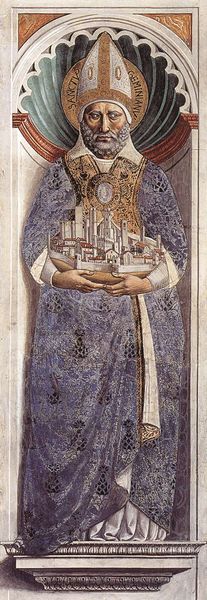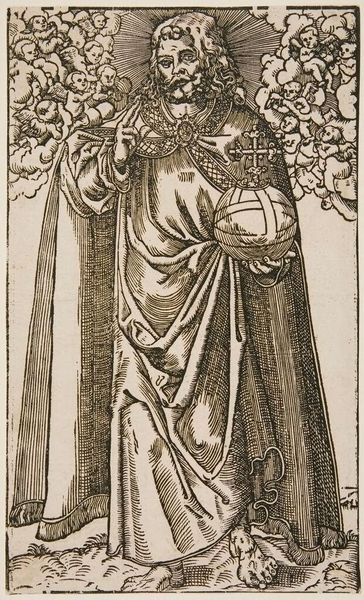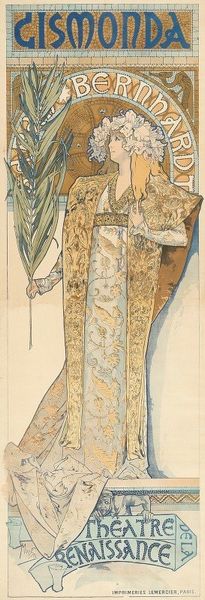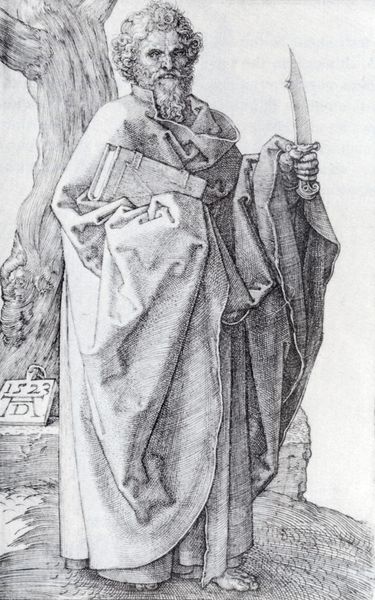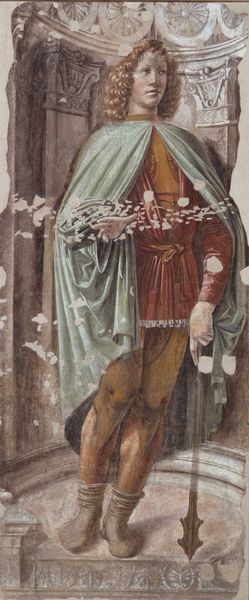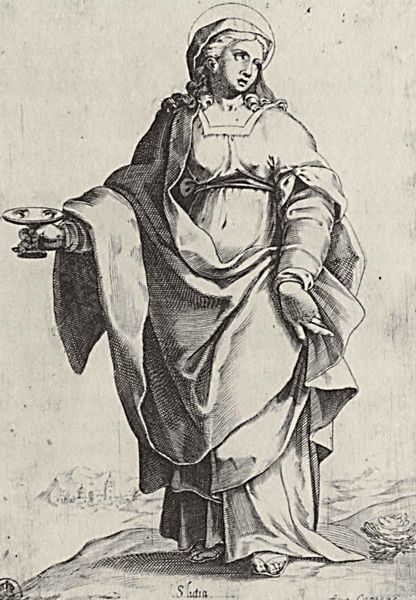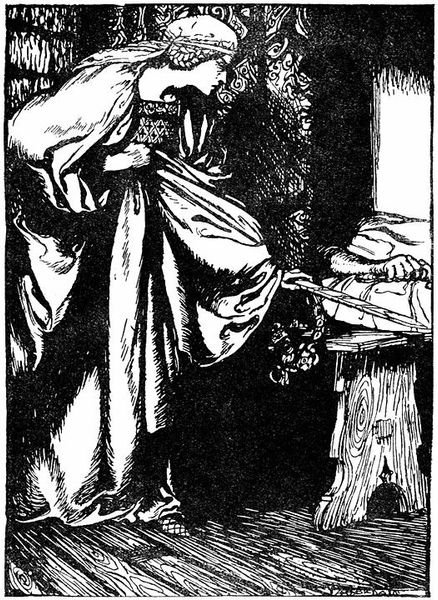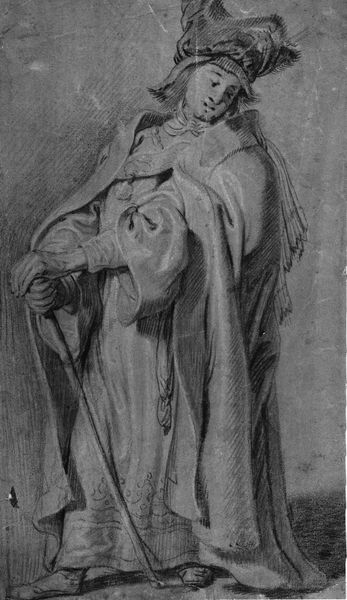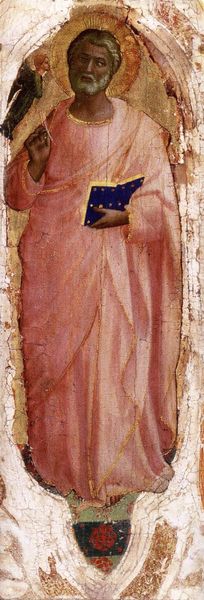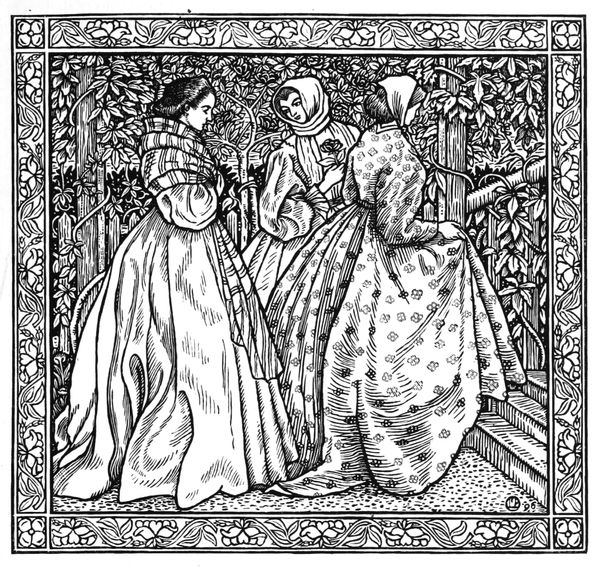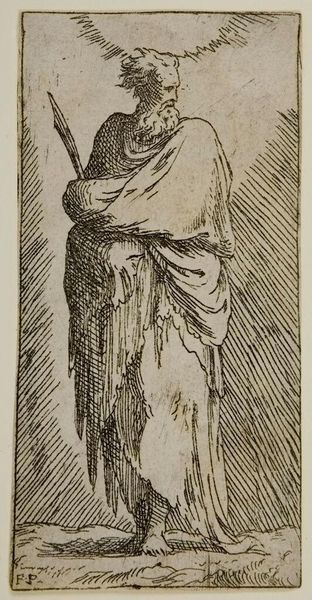
tempera, fresco
#
allegories
#
medieval
#
allegory
#
tempera
#
symbol
#
sculpture
#
holy-places
#
fresco
#
history-painting
#
italian-renaissance
#
mixed media
Dimensions: 120 x 60 cm
Copyright: Public domain
Curator: Giotto’s "Injustice," a fresco created around 1306, forms part of his allegorical cycle in the Scrovegni Chapel in Padua. My first impression of it is stark. It exudes a palpable stillness, an almost chilling passivity in the face of wrongdoing. Editor: You feel that too, eh? It hits you right away, this sense of…oppression. But it’s also so interesting to see what injustice *looks* like, given form and put on display like this. What sort of materiality did Giotto use here? I’m seeing fresco technique listed in the notes... Curator: Yes, Giotto employed fresco, painting directly onto the wet plaster. This technique meant that the work needed to be done relatively quickly, demanding careful planning of the application. The material reality itself speaks to labor practices of that time, and also, what sort of material culture did this commission create, what needs did it supply? Editor: Exactly! It feels immediate, almost urgent, which adds to that oppressive mood. The muted color palette—earthy tones and grays—reinforces that feeling, almost as though the colors themselves are suppressed, robbed of vibrancy by this figure, Injustice. See how she is surrounded by barren trees. They suggest not merely a physical space, but the character of the allegory. Curator: The lower register particularly reinforces that oppression. Bandits roam while a murdered man lies at their feet. It creates a bleak portrait of social decay stemming directly from corrupt power. I'd venture that these allegorical representations provided more than just visual cues of virtue versus vice. They also reinforced class and power dynamics within a societal framework deeply structured around faith. Editor: It's interesting how you place all that in context with power. In the foreground, details like the robbers remind us, yes, this violence isn’t just a symbol. Real labor goes into extracting from, and suppressing, everyday folk, eh? And how it reflects in materials, fresco against tree! I never expected a medieval fresco to feel so, well, relevant. Curator: It makes one contemplate, even today, the complex interplay between representations, material conditions, and our own contemporary anxieties and lived experiences with the concept of justice.
Comments
No comments
Be the first to comment and join the conversation on the ultimate creative platform.
